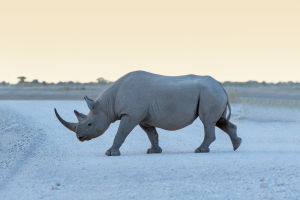The cheetah, the fastest land animal on Earth, is renowned for its breathtaking speed and graceful agility.
Native to Africa, this magnificent big cat can reach speeds of up to 70 miles per hour in short bursts, making it a true marvel of the animal kingdom.
Built for Speed
Cheetahs are uniquely designed for sprinting. Their slender, lightweight bodies, long legs, and flexible spines allow them to stretch their bodies forward with each stride, covering great distances rapidly. Their large nasal passages enable them to take in more oxygen during a high-speed chase, while their long, muscular tails provide balance and steering at high velocity. Unlike other big cats, cheetahs cannot retract their claws fully, which gives them better traction as they accelerate.
Hunting Skills and Diet
Cheetahs primarily hunt during the day to avoid competition with larger predators like lions and hyenas. Their excellent eyesight helps them spot prey from a distance. Once a target is selected, the cheetah stealthily approaches, getting as close as possible before launching a full-speed sprint to take down the animal. Common prey include antelope species like impalas and gazelles, as well as young wildebeests and smaller animals like hares.
Social Behavior and Reproduction
Cheetahs have a unique social structure. Adult females are generally solitary, except when caring for cubs. Males, on the other hand, often form small groups called coalitions, usually with their brothers from the same litter. These coalitions help males defend their territory and increase their chances of successful hunts.
Female cheetahs give birth to litters of three to five cubs after a gestation period of about three months. The cubs are born with a soft, greyish mane that offers some camouflage in the grass. Sadly, many cubs do not survive their first year due to predation by lions, hyenas, or eagles. The survival of the young depends heavily on the mother’s ability to keep them safe and teach them essential hunting skills.
Conservation Challenges
Cheetahs are listed as vulnerable on the International Union for Conservation of Nature (IUCN) Red List. Habitat loss, human-wildlife conflict, and declining prey populations are significant threats. Inbreeding within small, isolated populations also poses a challenge, reducing genetic diversity and the species' overall resilience.
Efforts are underway to conserve cheetah habitats and mitigate conflicts with farmers. Wildlife organizations work to create safe corridors for cheetahs to roam and educate local communities on coexistence strategies. Protecting this iconic species requires global attention and collaborative action.
Lykkers, The cheetah, with its unrivaled speed and beauty, is a symbol of nature’s incredible engineering. Though they face numerous challenges, these elegant predators continue to captivate the world. Conservation efforts remain crucial to ensure that future generations can witness the breathtaking sight of a cheetah sprinting across the savannah.


